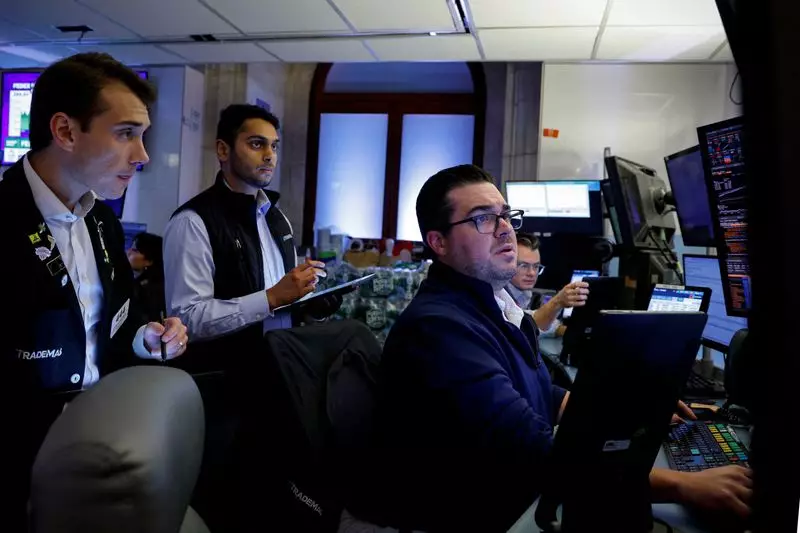U.S. stock index futures faced downward pressures on Wednesday, reflecting the heightened apprehension amongst investors as geopolitical tensions escalate in the Middle East, coupled with a significant dockworker strike along the American East and Gulf coasts. This backdrop of heightened uncertainty comes at a pivotal time as economic data is on the verge of release, potentially providing crucial insights into the state’s monetary policy and overall economic health. The initial trading in October saw major indices like the S&P 500 and Nasdaq reach approximately two-week lows, highlighting the market’s vulnerability to external shocks.
Recent actions by Iran, including missile strikes against Israel in response to prior attacks, have instigated fears of further escalation. Despite the unsettling atmosphere, markets appeared to stabilize momentarily, buoyed by pledges from both Israel and the United States to retaliate if necessary. The volatility in oil prices became apparent, as oil-related stocks such as SLB and Occidental Petroleum experienced premarket gains of around 2%, riding the wave of crude prices which saw an increase of over 2.5%. This spike is largely attributed to trader anticipations of potential supply hurdles emanating from the region, which is known for its substantial reserve of oil.
While defensive stocks like Lockheed Martin and RTX managed to gain 1.3% and 1.4%, respectively, thanks to a record-high performance of the aerospace and defense index the previous day, the broader market sentiment remained cautious. Analysts from ING Bank suggested a narrow pathway for optimism, hypothesizing that should Israel’s military response remain moderate, the situation may conclude in an uneasy de-escalation, reminiscent of dynamics witnessed earlier in the year.
Economic Indicators and Stock Futures
At 05:28 a.m. ET, the futures indicated a lack of investor confidence, with Dow E-minis dropping by 0.41%, and S&P 500 and Nasdaq 100 E-minis also trending downward. The Russell 2000 index followed suit with a notable 0.8% decline. Compounding this uncertainty, the CBOE Volatility Index, which serves as a bellwether for market stress, lingered near a three-week peak, underscoring the tense atmosphere pervading financial markets.
With the release of the ADP National Employment survey scheduled for the morning, investors are keenly eyeing this data for signals regarding the health of the labor market, particularly in light of impending non-farm payroll figures. These upcoming indicators are critical as the Federal Reserve continues navigating a nuanced monetary policy environment. Last month, the Federal Reserve initiated an unprecedented monetary easing strategy with a 50 basis point cut, aimed at ameliorating concerns surrounding the jobs market. Current market expectations favor a potential rate reduction in November, reflecting a shift in sentiment as traders recalibrate their predictions based on the evolving economic landscape.
Strike Implications and Corporate Responses
The ongoing dockworkers’ strike, which has now entered its second day, reports potential economic repercussions nearing $5 billion per day, as estimated by analysts at JPMorgan. Although several major retailers, including Costco and Walmart, appeared prepared for possible disruptions—with their shares remaining static in premarket activity—this standoff raises fears of escalating inflation rates as oil prices and logistical bottlenecks collide.
Moreover, market dynamics were further affected by the announcement from Nike, which revealed a striking 5% decline in stock value after the company retracted its annual revenue forecast. In a climate already rife with uncertainty, the talks associated with a new CEO also injected additional unease into the market.
As investors navigate these turbulent waters, the influence of geopolitical events and domestic strife offers a lesson in market sensitivity. The juxtaposition of rising oil prices, labor disruptions, and central banking decisions reveals the complex interplay of factors that shape market sentiments. Policymakers’ remarks throughout the day may hold the key to crystalizing investor perspectives, serving as both a compass and a forecast in these precarious times. The necessity for vigilance and adaptability amidst this multifaceted scenario cannot be overstated, as the potential for swift market shifts looms large.

